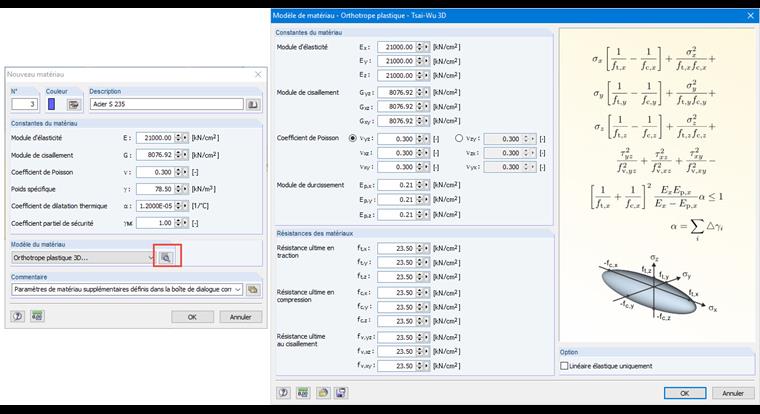Le modèle de matériau de Tsai-Wu combine les propriétés plastiques et les propriétés orthotropes. Il est ainsi possible de modéliser des matériaux présentant des caractéristiques anisotropes, tels que le plastique ou le bois. Lorsque le matériau devient plastique, les contraintes restent constantes. Une redistribution est réalisée selon les rigidités disponibles dans les directions individuelles. La zone élastique correspond au modèle de matériau Orthotrope - 3D. Pour la zone plastique, le fluage selon Tsai-Wu est appliqué :
Où :
Le critère de contrainte peut être imaginé comme une surface en forme d’ellipse dans une zone de contrainte à six dimensions. Si l'une des trois composantes de contrainte est appliquée comme une valeur constante, la surface peut être projetée sur un espace de contraintes tridimensionnel.
Si la valeur pourfy (σ) est inférieure à 1, les contraintes se trouvent dans la zone élastique. Der plastische Bereich ist erreicht, sobald <nobr>fy(σ) = 1</nobr>. Werte größer als 1 sind unzulässig. Das Modell verhält sich ideal-plastisch, d. h. es findet keine Versteifung statt.
